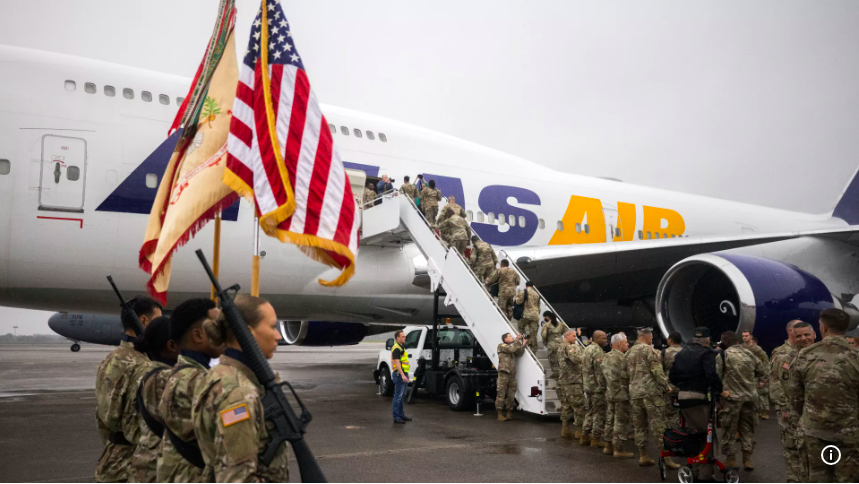"U.S. military drawdown in Europe and its implications for NATO"

Uncertainty Over US Troop Presence in Europe Fuels NATO Concerns
As questions swirl around the future of the United States' military commitment to Europe, President Donald Trump’s push for greater NATO self-reliance is causing growing unease among allies and lawmakers. Although there has been no official announcement regarding a reduction of US forces in Europe, signs from top leadership — including President Trump and Defence Secretary Pete Hegseth — indicate a shifting focus away from Europe and toward China and America's southern border.
Senate Concerns Over Pentagon Planning
At a recent Senate Armed Services Committee hearing, Chairman Roger Wicker expressed strong criticism toward what he called “deeply misguided and dangerous views” within the Defence Department. He accused unnamed “mid-level bureaucrats” of advocating for a US military drawdown in Europe, allegedly without proper coordination with Defence Secretary Hegseth.
“There are some who believe now is the time to reduce drastically our military footprint in Europe,” Wicker said. “I’m troubled at those deeply misguided and dangerous views.”
Despite Wicker’s remarks, the Pentagon has made no public proposal to reduce US troop levels on the continent. Nevertheless, his comments point to internal disagreements within Washington over the US role in European security.
US Command Role in NATO at Risk?
Another point of contention involves the long-standing American leadership of NATO’s military structure. Army General Christopher Cavoli, commander of US European Command and Supreme Allied Commander Europe, warned that relinquishing this leadership to another NATO nation would be “problematic.”
Cavoli highlighted that such a shift could complicate nuclear command and control and result in American troops operating under non-US command in the event of an Article Five scenario — NATO’s collective defence clause. “That would bring some challenges in terms of nuclear command and control,” he said. “It would put us in a position where... large numbers of American troops [could be] under non-US command.”
The general reaffirmed that US military presence in Europe remains critical to NATO's transformation and modernisation, citing a 40% increase in defence spending among NATO members since Russia’s full-scale invasion of Ukraine in 2022.
Shift in Focus: From Europe to China
Defence Secretary Pete Hegseth has echoed Trump’s vision of a strategic pivot. During his first visit to NATO and the Ukraine Defence Contact Group in February, Hegseth openly told allies that the US would reassess its troop levels in Europe due to the pressing need to prioritise security challenges from China.
“I’m here to directly and unambiguously express that stark strategic realities prevent the United States of America from being primarily focused on the security of Europe,” Hegseth said.
Adding to NATO’s anxieties, the US has stepped back from leading the international effort to coordinate military support for Ukraine, handing over that role to the United Kingdom. This change has alarmed allies who view it as another sign of the US distancing itself from the alliance.
Reassurance Amid Doubt
To quell growing fears, Secretary of State Marco Rubio is currently in Brussels, aiming to reassure NATO allies about continued US support. His diplomatic mission seeks to reinforce the message that, despite a shifting global strategy, the United States still values its role within NATO.
These reassurances come against the backdrop of a significant US military buildup in Europe during President Joe Biden’s administration, in response to Russia's 2022 invasion of Ukraine. Under Biden, the number of US troops in Europe increased by approximately 20,000, bringing the total to about 100,000. These troops have played vital roles in training, logistics, and bolstering the morale of NATO allies, especially those bordering Russia.
The US presence includes major assets such as the Navy’s 6th Fleet and strategic nuclear warheads, ensuring NATO’s deterrent posture remains credible.
Uncertain Future, High Stakes
Although no official policy shift has been announced, the rhetoric and actions of the Trump administration suggest a reevaluation of the US role in European security. Trump’s desire for NATO to shoulder more of the defence burden and his faltering attempt to broker peace between Russia and Ukraine point to a more isolationist stance.
Senator Wicker’s public criticism, General Cavoli’s warnings, and Secretary Rubio’s diplomatic efforts underscore the seriousness of the debate over US commitment to NATO. Allies are watching closely, worried that any reduction in American support could embolden adversaries like Russia and destabilise the region.
As the US recalibrates its global military priorities, the implications for NATO and European security remain uncertain. What is clear, however, is that the future of the US troop presence in Europe is now a central issue in the broader conversation about America’s role on the world stage.
- Art
- Causes
- Crafts
- Dance
- Drinks
- Film
- Fitness
- Food
- Games
- Gardening
- Health
- Home
- Literature
- Music
- Networking
- Other
- Party
- Religion
- Shopping
- Sports
- Theater
- Wellness


